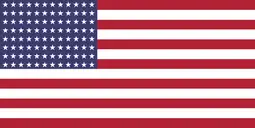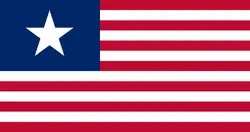What are the "Six Flags" that have Flown over Texas
Every year roughly 25 million people queue up at Six Flags amusement parks across North America to test their nerve against death-defying roller coasters and scream at the splashdown in plunging water flumes. With all the excitement afoot few of the thrill-seekers bother themselves with the oddly vexillological origin of the fun centers. But the Six Flags name is grounded in very real history, which when dissected, encapsulates about 400 years of early American settlement.
Angus Gilchrist Wynne, Jr. grew up in a prominent East Texas family. His father was the first President of the State Bar of Texas and his brother was one of the founders of the Dallas Cowboys. [1] Wynne worked the Texas oil fields but after a stint in the United States Navy during World War II he drifted into real estate development. On a trip to see the new Disneyland in California in 1957 Wynne became convinced that his Lone Star State needed a "Disneyland-like Great Southwest Land." [2]
Fifteen thousand Texans were waiting at the gate for Angus Wynne to cut the ribbon on his new amusement park in August of 1961. [3] Wynne called his pleasure palace "Six Flags Over Texas," taking the name from the six sovereign nations that had presided over the government of Texas. The park was divided into separately themed sections, a la Disneyland, with each representing a period of the state's history which came alive with miniature towns, shows, and attractions.
Texans received plenty of entertainment at Six Flags to help the overt dose of history go down. By the time Six Flags Entertainment Corporation celebrated its golden anniversary in 2011 the company had spread far beyond its Texas roots and was the largest amusement park operator in the world; history was no longer part of its profit equation. The Six Flags & Texas Railroad is the lone attraction from 1961 still whisking passengers around the amusement park. So what were the six flags that must seem completely obtuse to those buying tickets in Montreal and Mexico City and Jackson, New Jersey?
Spain
Of course, when the native American populations are not ignored, many more than six nations have occupied the lands that are modern-day Texas. But the first European nation to stake a claim in Texas was Spain, beginning with a decree by Charles I in 1519. [4] With this arbitrary edict, Hernán Cortés, who had washed out of law school and signed on as a soldier-adventurer to Santo Domingo in 1504, set his sights on the Aztec nation in Mexico which was rumored to control vast reserves of wealth. Cortés received permission to lead an expedition towards Mexico City but when it was rightly assumed he was no more than a fortune hunter the orders were withdrawn. Cortés sailed with 600 men on eleven ships anyway and completed the conquest of the Aztecs in 1523. The land was now under the control of New Spain.
While in Mexico City the Spanish did little to colonize the lands to the north for nearly 200 years. From time to time they would hear tell of a "great kingdom of Texas." The name was apparently in wide use by Indians of East Texas and roughly translated to "friends" or "allies." Damián Massanet would finally found the first Spanish mission among the Tejas Indians in 1689. [5]
France
René-Robert Cavelier, Sieur de La Salle, explored around the Great Lakes in the 1600s, pushing westward and establishing forts for New France. In actuality, he never stopped looking for a quick passage to China. LaSalle claimed Louisiana for the French in 1682 and launched an expedition on July 24, 1684, to establish a French colony on the Gulf of New Mexico. His men constructed Fort Saint Louis on what is today Victoria County in Texas and raised the Bourbon royal standard of the Kingdom of France. LaSalle would also die on future Texas soil in 1687 when he was murdered during a mutiny. The colony collapsed shortly thereafter. [6]
In 1800, Napoleon Bonaparte won portions of northern Texas as part of his beat-down of Spain in the Napoleonic Wars. But there was hardly time to ship famous French Tricolours to the region before Napoleon sold the Louisiana Territory to Thomas Jefferson for 68,000,000 francs or about five cents per acre. [7]
Mexico

Emperor Napoleon's successes in Europe helped loosen Spain's grip in the New World. Spanish leaders squelched early revolutionary tendencies in the early 1800s but gradually the independence movement, led by secular rabble-rousing priest Miguel Hidalgo y Costilla, the "Father of Mexican Independence," gathered influence. After General Agustín de Iturbide and his Army of the Three Guarantees took control of Mexico City on September 27, 1821, the independence of Mexico, including most of the land of today’s Texas, was formally recognized. [8]
Republic of Texas
Americans, always on the lookout for a good fight, fought on the side of Mexico against Spain. After winning of independence for Mexico many of those Americans began settling in Mexican land, most notably Stephen F. Austin who crossed the Brazos River and set up a colony that came to be known as Mexican Texas. So many farmers were staking out land that alarms went up in Mexico City and President Anastasio Bustamante banned all immigration of United States citizens to Texas in 1830. [9] Mexico was also deeply concerned with the expansion of slavery by these Americans into Mexico.
The colonists fought back - first with words and then with rifle shots when Texas insurgents stormed the walls of Fort Velasco on the Gulf of Mexico on June 25, 1832. [10] By 1835 there was open warfare and after delegates meeting along the Brazos River in an unincorporated area called "Washington" on March 2, 1836 issued the Texas Declaration of Independence a new nation was launched. [11] Just over a year later General Sam Houston led the Texian Army in a rout of President Santa Anna and his men in the Battle of San Jacinto, avenging the defeat at the Alamo mission and forcing a peace treaty that recognized the Republic of Texas as an independent country.
United States of America
At least that is what the Texans thought. The Mexican interpretation was that Santa Anna merely agreed to lobby for the independence of Texas back in Mexico City. Meanwhile the citizens of the new Republic of Texas were eager to fold up their "Lone Star Flag" and adopt the stars and stripes of the United States. Negotiations began almost immediately and in 1845 Texas joined the Union as the 28th state. The dispute of legitimacy became moot when Mexico and the U.S. became embroiled in a boundary in 1846. When the Mexican-American War ended in 1848 Mexico had lost about half of its territory, including the Republic of Texas, which may or may not have been theirs to lose to begin with.
Confederate States of America
Flag number six flew over Texas during the American Civil War, as southern states called the Civil War from its beginning. Texas left the Union on February 1, 1861 but governor Sam Houston refused to pledge an oath of allegiance to the breakaway country. The hero of Texas independence was summarily ousted from office and Texas began flying the colors of the Confederate States of America on March 2, 1861. [12]
Conclusion
It has now been more than 150 years since Texas switched official flags for the last time after the Civil War but the remnants of its tumultuous past are very much in evidence. The slogan percolates across America’s second-largest state and coats of arms from the six nations are proudly displayed under the 308-foot high dome of the Texas State Capitol in Austin. Of course, that past can also be reflected on while one is flipping head over heels six times in the wing-seat Total Mayhem roller coaster at a Six Flags adventure park.
References
- Jump up ↑ "A Forgotten Founder of the Dallas Cowboys," Know Your Dallas Cowboys, website, posted January 28, 2009
- Jump up ↑ Cashion, Ty, The New Frontier, Historical Publishing Network, 2006, page 123
- Jump up ↑ Bosse, Paula, "Angus Wynne, Jr.'s Texas Disneyland' - 1961," Flashback: Dallas, website, posted 2014
- Jump up ↑ Robinson III, Charles M, The Spanish Invasion of Mexico 1519-1521, Osprey Publishing, 2004, Introduction
- Jump up ↑ Fry, Phillip L.,"Texas, Origin of the Name,” Handbook of Texas Online published by the Texas State Historical Association, June 15, 2010
- Jump up ↑ Weddle, Robert S., “La Salle's Texas Settlement,” Handbook of Texas Online published by the Texas State Historical Association, October 30, 2011.
- Jump up ↑ “The Louisiana Purchase," Jefferson National Expansion Memorial Museum Gazette, National Park Service, December 1991
- Jump up ↑ “Galicia, Angie, "Don Miguel Hidalgo: Father of Our Independence," Inside Mexico, September 30, 2013
- Jump up ↑ Long, Christopher, “Old Three Hundred,” Handbook of Texas Online published by the Texas State Historical Association, June 15, 2010.
- Jump up ↑ “Velasco, Battle of” Handbook of Texas Online published by the Texas State Historical Association, June 15, 2010
- Jump up ↑ “Texas Declaration of Independence," The Gilder Lehrman Institute of American History, website, uploaded 2013
- Jump up ↑ "Texas in the Civil War: Stories of Sacrifice, Valor and Hope," pamphlet, Texas Historical Commission, 2013.
Related Articles
- The Best Historians and Books According to James McPherson
- What Was the Significance of the Southwest in the Outcome of the Civil War
- The Mysterious Illness of Jim Bowie: How Did He Contribute to His Own Decline?
- Why Was Vicksburg “The Gibraltar of the Confederacy?”
- Were Members of the Underground Railroad Criminals?




